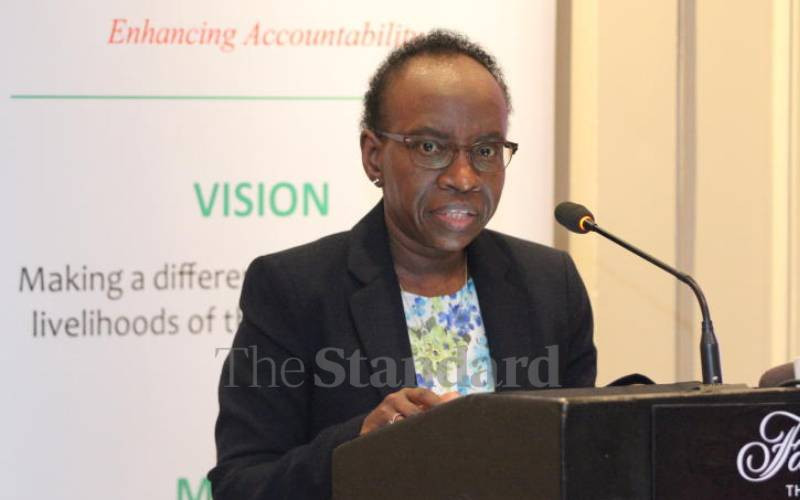
As primary schools gear for implementation of Junior Secondary School, a report by the Auditor General shows under-funding of infrastructure development.
The audit shows that between 2010 and 2020, out of 22,000 registered public primary schools, only 2,265 schools benefited from Sh1.7 billion in school infrastructure funds.
"From the analysis, on average, each school received Sh648,453. Further review of schools' request for funding and interviews with school heads revealed this amount may only be enough to complete one standard classroom," the report by Auditor General Nancy Gathungu noted.
The report, which was released in November last year, recommended the Ministry of Education conducts a comprehensive assessment of infrastructure to help in targeting resources for needy schools.
According to the report, interviews with the ministry officials and school heads revealed that there was no systematic way of identifying the infrastructure needs of public primary schools.
"Schools are requested to provide reports of their needs on an ad hoc basis and the was no evidence that the ministry collates and uses this data for long-term planning and budgeting purposes," the report noted.
"The consequences of the lack of a long-term plan for infrastructure expansion, improvement and maintenance in primary schools is deficits in infrastructure resulting to crowding in some schools of the schools sampled," the report stated.
Under the free primary education, capitation for repair and maintenance of schools stood at Sh106 per student per year at the time of the audit.
"The capitation is meant to cater for maintenance of all facilities in schools from the classroom, sanitary facilities, administration offices and furniture," the report shows.
For instance, data obtained from 55 schools sampled showed that 84 per cent required extra classrooms, 75 per cent required extra toilets, 80 per cent had insufficient desks and 78 per cent has insufficient administration offices.
Due to the deficiencies in infrastructure, the auditors found that a school in Bungoma, for instance, had a student-classroom ratio of 94 students.
"The highest student toilet ratio was 161 students sharing a toilet in Bungoma DEB Primary School in Bungoma County, while the lowest was 9 students sharing a toilet in Mwanyambevo Primary School in Makueni County," the report noted.
The audit team also observed that there were different procedures used for the application and allocation of school infrastructure improvement grants.
It was found that some schools applied directly to the ministry while others submitted comprehensive project proposals with Bills of Quantities attached.
The findings of the audit show that the ministry did not have long-term strategies for providing infrastructure for public primary schools and the budgeting and resource allocation was not based on data from the needs assessment.
The report noted, "The amounts disbursed to schools is minimal and cannot make a significant impact on infrastructure condition. Further, enforcement of infrastructure standards is hampered by the school's lack of resources to expand or improve infrastructure.
"Interviews with school infrastructure management unit and FPE unit staff revealed that allocation for an infrastructure grant to the ministry was not informed by data from needs assessment of the schools," the report showed.
The allocation per student, according to the report, was inadequate and unfavourable for schools with low enrolment.
"For example, based on 2020 enrolment, Kotoron Primary School with 81 students was expected to receive an estimate of Sh8,594 while Bungoma DEB Primary School with 3,214 students was expected to receive Sh341,005 during the same period."
The audit found that the deficiency had led to one classroom being shared between two different classes.

